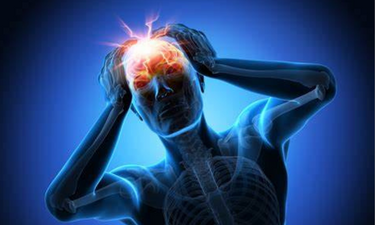Diseasing of America*: We Are Addicted to Disease Therapy
The transfer of mental health from the family and community to the medical system is regarded as a modern miracle. It is an unmitigated disaster.
In the proceedings of a 1988 conference in which he and I both participated, former sociologist now WHO epidemiologist Robin Room wrote:
In comparing Scotland and the United States, on the one hand, with developing countries like Mexico and Zambia, on the other hand, in the World Health Organization Community Response Study, we were struck with how much more responsibility Mexicans and Zambians gave to family and friends in dealing with alcohol problems, and how ready Americans and Scots were to cede responsibility for these human problems to official agencies or to professionals. . . . Studying the period since 1950 in seven industrialized countries (including California), a period in which alcohol consumption grew, we were struck by the concomitant growth of treatment provision in all these countries. The provision of treatment, we felt, became a societal alibi for the dismantling of long-standing structures of control of drinking behavior, both formal and informal. (my emphasis)
Room has himself abandoned such a community orientation in favor of the international public health movement to label any drinking at all as inherently dangerous. (I know Room and have drunk with him in four countries on three continents, including under the auspices of the Swedish national alcohol monopoly where he worked for a time.)
And what have been the results of this movement for drug use problems, on the one hand, and mental illness on the other, from community and family care to the medical system?
In the United States, which has led and continues to lead this international medicalization process, writing in the 2019 World Happiness Report, Columbia University economist Jeffrey Sachs describes the results of WHO’s Global Burden of Disease study of 196 nations. In this study, the US loses second most life years due to disability and death (DALYs) from drugs:
The US lost 1,703 DALYs per 100K population from all forms of drug use, the second-highest rate of drug-use disease burden in the world. The US rate compares with 340.5 DALYs per 100K in Europe, one-fifth of the US rate.
Among all 196 countries, the US ranks 2nd overall in DALYs lost to all drug use disorders; 1st in DALYs from cocaine use; 3rd in DALYs from opioid addiction; and 2nd in DALYs from amphetamine use.
As for mental health:
These very heavy burdens of substance disorders are matched by the high US rankings on other mental disorders. The US ranks 5th in the world in DALYs from anxiety disorders and 11th in the world from depressive disorders. Across all mental disorders, the US ranks 4th in the world.
The World Health Organization itself—recognizing the disaster that the designation and treatment of mental health issues as medical, rather than community, issues—declared in its 2022 worldwide mental health report:
There is a great need to transform mental health care to make it community-based. . . .
The global shift towards care in the community has been very slow and truly multisectoral initiatives remain few and far between. The truth is that two decades after the landmark 2001 [WHO mental health] report, and nearly a decade after the world committed to the action plan, the countries and communities that have seen real innovation and advances remain islands of good practice in a sea of need and neglect.
Interestingly, former director of the US National Institute of Mental Health director, Thomas Insel, a neuroscientist and psychiatrist who has spearheaded this movement, now regrets it, and wishes that we would reverse it. He does so based on results like these reported in Scientific American:
The most discouraging assessment came in 2013 from an in-depth analysis by the U.S. Burden of Disease Collaborators. Hundreds of investigators gathered data on 291 diseases and injuries between 1990 and 2010. Combining premature death and disability to calculate the burden of each disease, they found that the toll of mental disorders [and drugs] had grown in the past two decades, even as other serious conditions became more manageable.
Shouldn’t we abandon this sinking ship?
That’s not going to happen. Rather the reverse process accelerates as the benefits of regarding mental illness and addiction as medical diseases are touted by mental health advocates in incessant public health announcements and as this concept is taught American children from grade school on.
And what has been the result for America’s youth? According to the CDC in 2023, things are worse than ever:
The rates of sadness are the highest reported in a decade, reflecting a long-brewing national tragedy only made worse by the isolation and stress of the pandemic.
“I think there’s really no question what this data is telling us,” said Dr. Kathleen Ethier, head of the C.D.C.’s adolescent and school health program. “Young people are telling us that they are in crisis.”
The answer? Investing even more in treatment for mental illness at earlier ages.
Who could question that?
* * * *
*Stanton published Diseasing of America in 1989. His recent memoir is titled A Scientific Life on the Edge: My Lonely Quest to Change How We See Addiction.
**The Life Process Program views addiction not as a disease or result of trauma but as an outgrowth of people’s normal life experiences.






